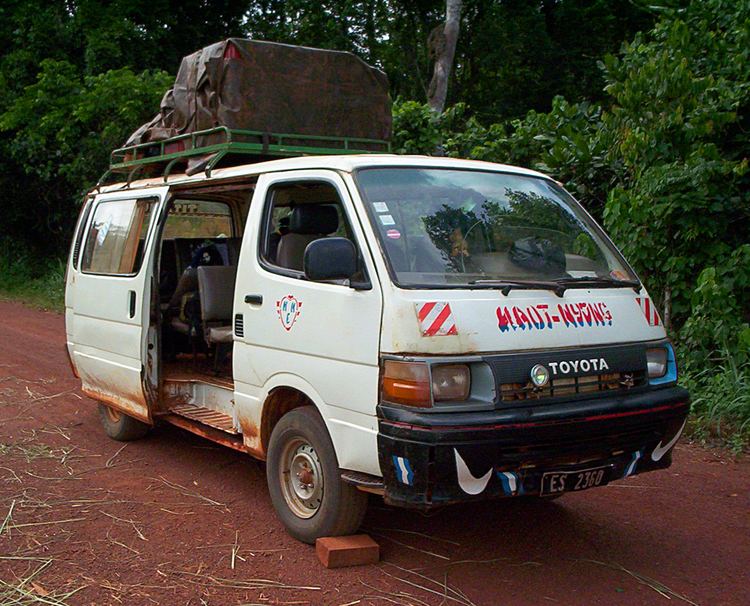 | ||
This article provides a breakdown of the transportation options available in Cameroon. The options available to citizens and tourists include railways, roadways, waterways, pipelines, and airlines. These avenues of transportation are used by citizens for personal transportation, by businesses for transporting goods, and by tourists for both accessing the country and traveling while there.
Contents
Railways
Railways in Cameroon are operated by Camrail, a subsidiary of French investment group Bolloré. As of May 2014 Camrail operated regular daily services on three routes:
Douala - Yaoundé
Yaoundé - Ngaoundéré
There are no rail links with neighbouring countries.
Roadways
Total highways: 50,000 km
Paved: 5,000 km
Unpaved: 45,000 km (2004)
Cameroon lies at a key point in the Trans-African Highway network, with three routes crossing its territory:
Cameroon's central location in the network means that efforts to close the gaps which exist in the network across Central Africa rely on the Cameroon's participation in maintaining the network, and the network has the potential to have a profound influence on Cameroon's regional trade. Except for the several relatively good toll roads which connect major cities (all of them one-lane) roads are poorly maintained and subject to inclement weather, since only 10% of the roadways are tarred. It is likely for instance that within a decade, a great deal of trade between West Africa and Southern Africa will be moving on the network through Yaoundé.
National highways in Cameroon:
Prices of petrol rose steadily in 2007 and 2008, leading to a transport union strike in Douala on 25 February 2008. The strike quickly escalated into violent protests and spread to other major cities. The uprising finally subsided on 29 February.
Waterways
2,090 km; of decreasing importance. Navigation mainly on the Benue River; limited during rainy season.
Seaports and harbors
Of the operating maritime ports in Cameroon, Douala is the busiest and most important. Lesser ports include Kribi, used chiefly for the export of wood, and Limbé, used only for palm-oil exports. Garoua, on the Benoué River, is the main river port, but it is active only from July to September. In 2005, Cameroon’s merchant fleet consisted of one petroleum tanker, totalling 169,593 GRT.
Pipelines
889 km of oil line (2008)
Airports
The main international airport is the Douala International Airport and a secondary international airport at Yaoundé Nsimalen International Airport. As of May 2014 Cameroon had regular international air connections with nearly every major international airport in West and Southwest Africa as well as several connections to Europe and East Africa.
In 2008 there were 34 airports, only 10 of which had paved runways.
Airports - with paved runways
total: 10
over 3,047 m: 2
2,438 to 3,047 m: 4
1,524 to 2,437 m: 3
914 to 1,523 m: 1 (2008)
Airports - with unpaved runways
total: 24
1,524 to 2,437 m: 4
914 to 1,523 m: 14
under 914 m: 6 (2008)
